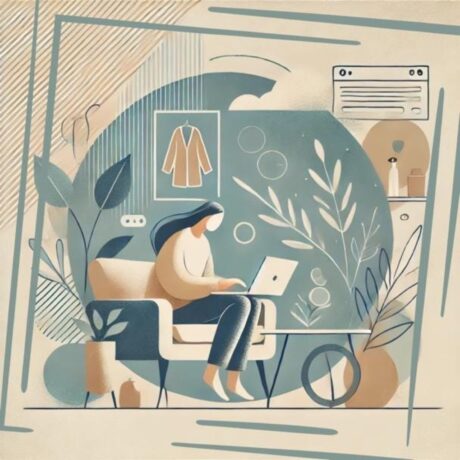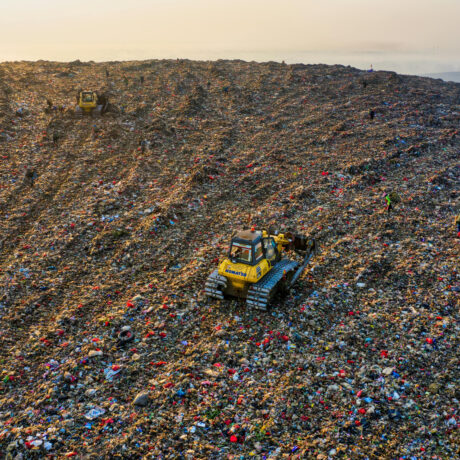The Future of Denim, Part #1: How the humble jean is redefining sustainable style.
It used to be the case that ‘sex sells’. From the perfume industry, to cars, chocolate, footwear and especially jeans, appealing to our primal instinct used to be a sure-fire sales strategy. But in an age of conscious consumerism, a commitment to sustainability and an interest in the story behind a brand is starting to take precedence.
We love our denim, so much so that the average consumer buys four pairs of jeans a year. In China’s Xintang province, a hub for denim, 300 million pairs are made annually. Just as staggering is the brew of toxic chemicals and hundreds of gallons of water it takes to dye and finish one pair of jeans. The resulting environmental damage to rivers, ecosystems and communities in China, Bangladesh and India is the subject of a documentary called The RiverBlue: Can Fashion Save the Planet? The question as to #WhoMadeMyClothes has now entered mainstream conversation and few items of clothing are more mainstream than a good old pair of blue jeans, right?
Whether it’s mass produced cotton, water pollution, excessive consumption of water, denim sandblasting and dyeing or poor working conditions, the wholesome image of the denim jean has masked their negative impact on the environment. However, the industry is evolving with this shift in consumer sensitivities as it reflects a more mindful generation.
Denim has always said something about the times in which we live and if ever the fashion industry needed proof of the power of storytelling to sell clothes, then Levi’s is it.
From inventing the blue jean back in 1873 to staying true to its philanthropic values – in 1897 founder Levi Strauss provided the funds for 28 scholarships at the University of California, all of which are still in place today – Levi’s has built a brand based on innovation and social responsibility, remaining authentic by not only refusing to compromise on these values, but also by using them to grow the brand. Founded in 1853, the US denim giant was valued at $6.2bn (£5.3bn) when it floated on the New York Stock Exchange earlier this year.
A name synonymous with jeans themselves, the American brand has navigated over 160 years of retail by adapting a strategy of product diversification, expansion in direct-to-consumer business and a better connection with consumers worldwide. It’s listened to its customers and reflected the times in which we live, while never losing touch with its heritage. “As a brand, Levi’s has always been more about its future than its past” Nicola Kemp, trends editor at Campaign magazine.
So what is the future of Levi’s and indeed of the denim industry more broadly? Manufacturers, brands and small denim upcycling businesses are revolutionising the culture and production of jeans and making great strides to change the way in which cotton plays it part, closing the loop in the life of a pair of jeans.
The business of denim
In April, the Kingpins trade fair, held in Amsterdam, brought together industry professionals, showcasing the latest trends and innovations to hit the world of denim, an epicentre for the denim industry and its future.
This year the show increased its ethics and sustainability focus by introducing new requirements for all its denim supply chain members after noticing that few had made serious progress toward improving CSR standards.
The new programme, which will require all exhibiting denim mills to meet new standards in corporate social responsibility (CSR), environment and chemical usage, it will be expanded to its New York, Hong Kong and China shows. It’s a seismic shift from the top.
“In social compliance we have found that virtually none of our denim mills have an SA 8000 certification or a WRAP certification – which is disappointing,” founder of Kingpins, Andrew Olah, said in a statement.
Speaking at the event, Tricia Carey, director of global business development for denim at Lenzing, said “sustainability will no longer be a trend – it will be embedded in the supply chain.”
Indeed, love and sustain the lifespan of a pair of jeans is now the spirit driving all the innovators from small repair and upcycling workshops through to vertical chains such as H&M and pure denim brands themselves.
Rebecca Larsen, product development manager at House of Gold, the agency which homes denim mills Blue Diamond, In the Loop, and Jeanious Laundry, said that more focus will be put on creating a circular denim industry. “Sustainability is important but it’s not enough. What really needs to happen is we need to close the loop. Instead of constantly producing more and more, we need to learn to reuse what we already have.” The trend of the 4 Rs – repair, recycle, reuse and reduce – will likely continue to rise in the next ten years, according to Larsen.
When it comes to overseeing each stage of the product cycle, central control is crucial meaning that vertical integration has come to play a key role.
Premium brands buying supply chains and passing on skills is a trend that seems to be growing in popularity since vertical integration allows brands to attain a higher level of quality control over factors such as waste, water, chemical and recycling management.
High Street heroes
Inspired by their presentation at Fashion Revolution’s Question Time, held at the V&A in April, I spoke to H&M’s sustainability expert Mattias Bodin and asked him where denim sits in their much-heralded sustainability policy.
“H&M Group doesn’t have a specific sustainable denim policy. Instead, our policies cover all our products and production processes, as well as for denim”, he said.
Indeed, the Swedish group’s Sustainability Report has already set the bar high for other high street vertical players.
“One of our sustainability goals is that all the cotton in our range should be recycled or sustainably sourced by 2020 at the latest: organic cotton, recycled cotton or cotton sourced through the Better Cotton Initiative (BCI). And we are almost there — sustainably sourced cotton represents 95 % of the cotton we sourced in 2018. We also support screened chemistry and are members in ZDHC.”
H&M rank all denim according to Jeanologia’s tool EIM (Environmental Impact Measurement), “30.8% of our denim products have achieved a green level EIM which means they used a maximum of 35 litres of water per garment during the treatment processes.”
Last autumn, H&M group’s Monki brand reached its goal to source 100% of its cotton products sustainably. Monki’s sustainably sourced cotton includes organic cotton, recycled cotton and Better Cotton sourced through the Better Cotton Initiative. Likewise, their Weekday label has also reached their goal to use 100% sustainably sourced cotton (2018), in their case, meaning organic or recycled cotton, in their denim and basics range.
Reflecting the industry’s interest in moving away from cotton more generally, Bodin adds “we’re also looking into new ways to incorporate more recycled fibers as a substitute for cotton.”
It’s clear to see denim is a big part of all our wardrobes, and as such a specific niche of the fashion industry brands, designers and manufacturers have the opportunity to really focus and lead in it’s development. We see Levi’s are looking to close the loop, Kingpins are encouraging brands to improve standards and H&M are looking into improving the raw material and this is a great step in the sustainability of of planet. However the overall message seems to be buy once, care and repair, made better but prolong the life. Next week we will release The Future of Denim, Part #2: the 3 R’s – Re-use, Re-pair, Re-cycle to see who’s innovating in extending the life of our denim.








